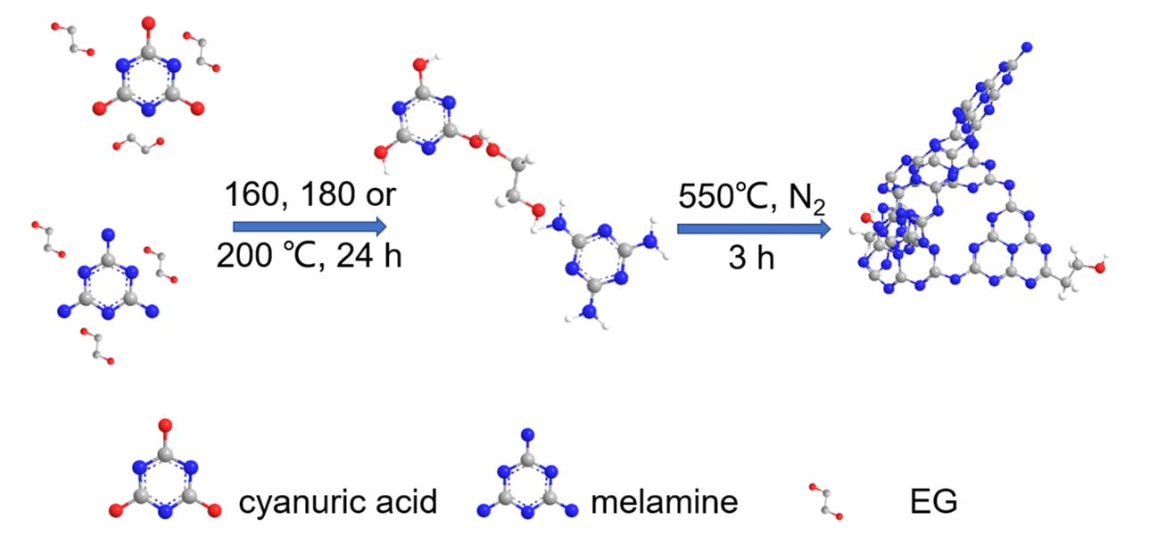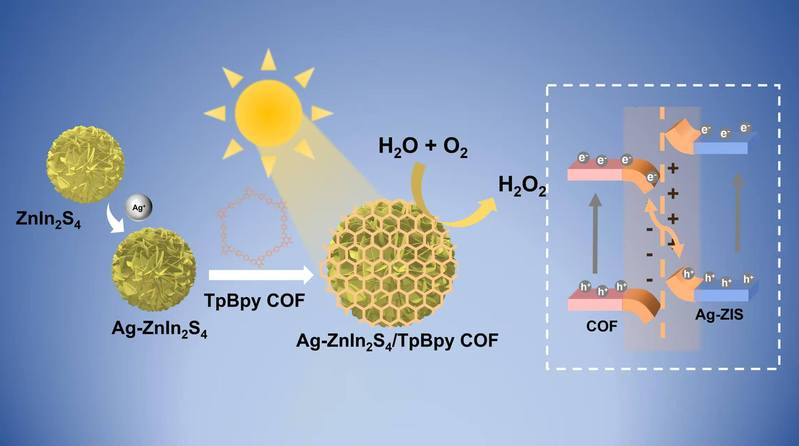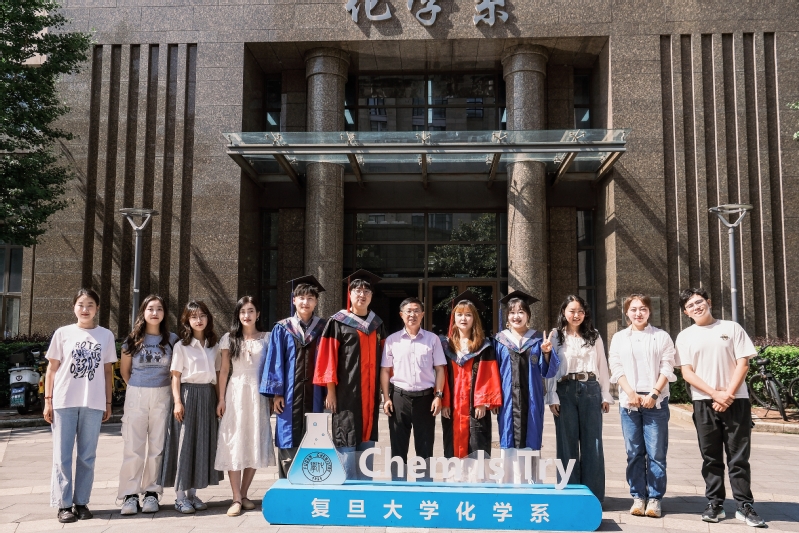The photocatalytic evolution of hydrogen (H2) from water splitting is considered a promising route to overcome the energy crisis, and the key lies in the preparation of efficient photocatalysts. Herein, superior ordered sponge-like carbon self-doped graphitic carbon nitride (g-C3N4) nanosheets (SCCNS) were prepared via a combined strategy of melamine–cyanuric acid complex supramolecular pre-assembly and solvothermal pre-treatment using ethylene glycol (EG) aqueous solutions (EG:water = 50:50 vol.%) as a solvent and carbon doping source. The following pyrolysis converts the naturally arranged melamine–EG–cyanuric acid supramolecular intermediates to highly crystalline SCCNS with large specific surface areas. The optimal SCCNS-180 exhibits superior photocatalytic H2 evolution activities (~4393 and 11 320 μmol h−1 g−1) when irradiated with visible light and simulated sunlight; these values are up to ~17- and ~18-fold higher than that of bulk g-C3N4. The quantum efficiency of SCCNS-180 at λ = 420 nm can reach 6.0%. The excellent photocatalytic performance of SCCNS-180 derives from its distinct ordered sponge-like nanosheet structure with highly crystallinity and the carbon doping, leading to its improved optical absorption, accelerated photoinduced electron–hole pair transfer and separation rate and enlarged specific surface area (134.4 m2 g−1).
https://iopscience.iop.org/article/10.1088/1361-6528/abd6d1/meta![]() Li_2021_Nanotechnology_32_155604.pdf
Li_2021_Nanotechnology_32_155604.pdf
 Wei-Lin Dai Group
Wei-Lin Dai Group




